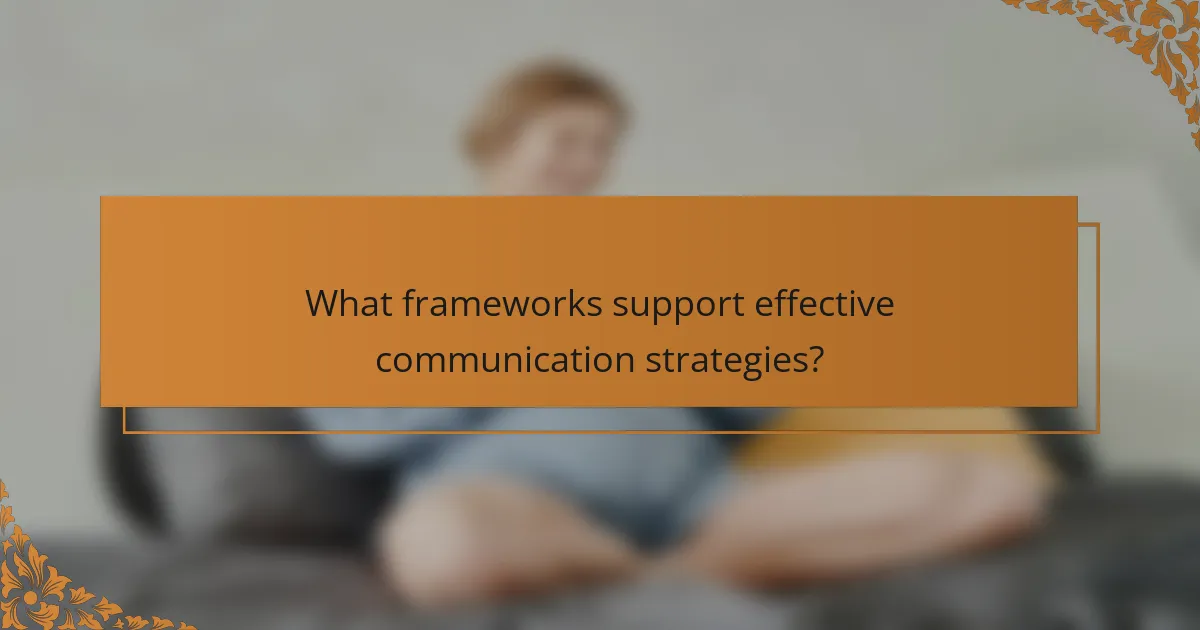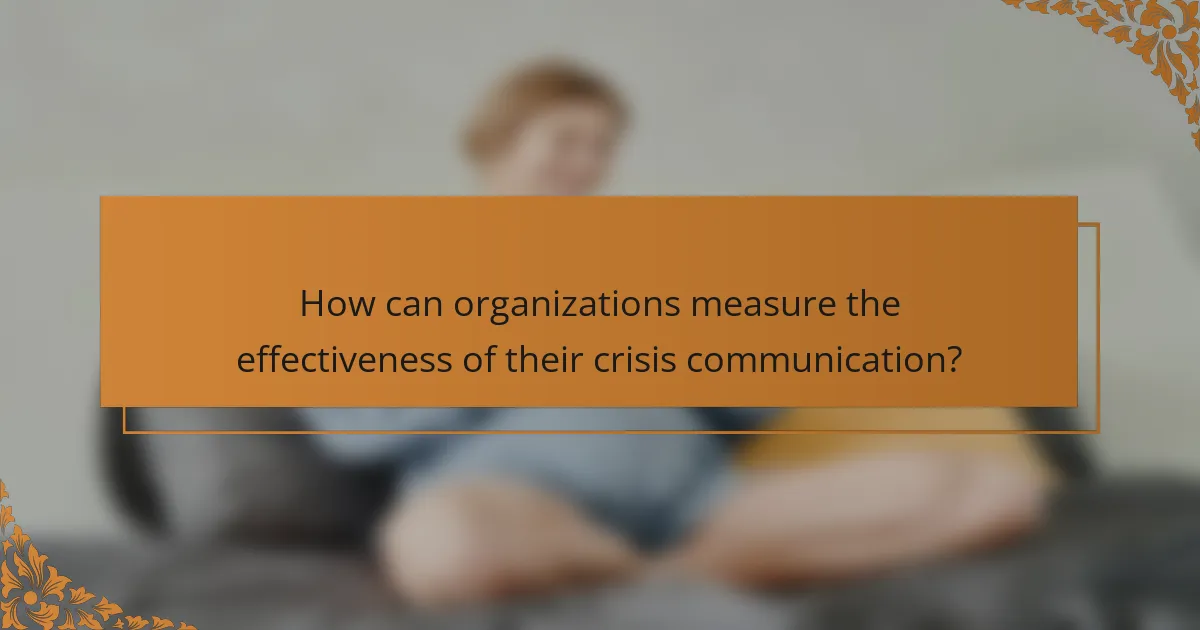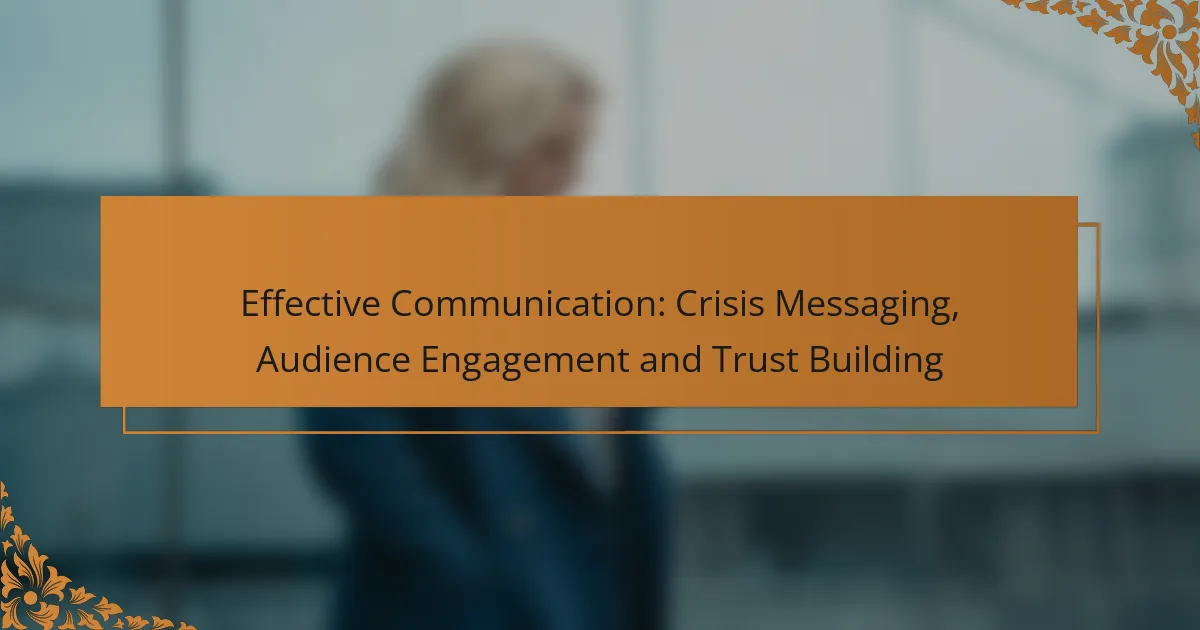Effective communication during a crisis is vital for maintaining trust and credibility with your audience. By delivering clear, empathetic messages and engaging actively, organizations can address concerns and provide essential information. Timely updates and honest dialogue are key components in fostering a strong relationship with stakeholders during challenging times.

How to create effective crisis messaging in the UK?
Creating effective crisis messaging in the UK involves clear communication, empathy, and timely updates to maintain trust with your audience. It’s essential to convey critical information succinctly while addressing the concerns of those affected.
Clear and concise language
Using clear and concise language is vital in crisis messaging. Avoid jargon and complex terms that may confuse your audience. Instead, opt for straightforward language that conveys your message effectively.
For example, instead of saying “mitigate risks,” use “reduce risks.” This simple change can enhance understanding and ensure your message is accessible to everyone.
Empathy and understanding
Demonstrating empathy in your messaging helps to build trust and rapport with your audience. Acknowledge the emotions and concerns of those affected by the crisis, showing that you understand their situation.
For instance, start your message with phrases like “We understand how difficult this situation is” or “Your safety is our priority.” This approach fosters a sense of connection and reassurance.
Timely updates
Providing timely updates is crucial during a crisis. Regular communication keeps your audience informed and reduces uncertainty. Aim to share updates as new information becomes available, even if there are no significant changes.
Establish a schedule for updates, such as every few hours or daily, depending on the crisis’s nature. This consistency helps manage expectations and keeps your audience engaged.
Consistent messaging
Consistency in messaging is key to avoiding confusion. Ensure that all communications align with your core message and values. This includes using the same terminology and tone across all platforms.
For example, if you refer to a “safety protocol,” use that term consistently rather than switching to “safety measures” in different communications. This uniformity reinforces your message and enhances credibility.
Utilizing multiple channels
Utilizing multiple communication channels ensures your message reaches a wider audience. Consider using social media, email, press releases, and your website to disseminate information effectively.
Each channel has its strengths; for instance, social media allows for rapid updates and engagement, while emails can provide detailed information. Tailor your content to fit each platform while maintaining a cohesive message.

What are best practices for audience engagement during a crisis?
Effective audience engagement during a crisis involves clear communication, active listening, and timely responses. By prioritizing these practices, organizations can build trust and maintain credibility with their audience.
Active listening techniques
Active listening is crucial in crisis situations as it allows organizations to understand audience concerns and respond appropriately. Techniques include paraphrasing what the audience says, asking clarifying questions, and acknowledging their feelings. This not only shows empathy but also helps in tailoring responses to address specific issues.
Consider using feedback tools such as surveys or polls to gauge audience sentiment. This can provide valuable insights into what the audience needs to feel reassured and informed.
Utilizing social media platforms
Social media platforms are essential for real-time communication during a crisis. They allow organizations to disseminate information quickly and engage directly with their audience. Regular updates on platforms like Twitter, Facebook, and Instagram can keep the public informed and reduce misinformation.
It’s important to monitor social media for audience reactions and questions. Responding promptly can help mitigate panic and demonstrate that the organization is attentive and responsive to public concerns.
Personalized communication strategies
Personalized communication enhances audience engagement by making messages more relevant and relatable. Tailoring messages based on audience segments—such as demographics or previous interactions—can improve the effectiveness of communication during a crisis.
Utilize email lists or targeted messaging through social media to reach specific groups with customized information. This approach can help ensure that the right messages reach the right people, fostering a sense of connection and trust.

How to build trust with your audience in crisis situations?
Building trust with your audience during a crisis involves clear, honest communication and consistent engagement. Establishing credibility is essential, as it can significantly influence how your audience perceives your organization and its responses.
Transparency in communication
Transparency is crucial in crisis situations, as it fosters trust and reassures your audience. Clearly share what you know, what you don’t know, and the steps being taken to address the crisis. Avoiding jargon and using straightforward language can help ensure your message is understood.
Regular updates are key to maintaining transparency. Consider setting a schedule for updates, such as daily briefings or weekly summaries, depending on the crisis’s severity. This consistency helps audiences feel informed and involved.
Demonstrating accountability
Accountability involves taking responsibility for actions and decisions made during a crisis. Acknowledge mistakes openly and outline corrective measures. This approach not only builds trust but also shows your audience that you are committed to improving.
Implementing a feedback mechanism can enhance accountability. Encourage your audience to share their concerns and experiences, and respond to them promptly. This two-way communication reinforces your commitment to addressing issues and fosters a sense of partnership.
Providing reliable information
Reliable information is essential for maintaining trust during a crisis. Ensure that the data you share comes from credible sources and is regularly updated. Misinformation can quickly erode trust, so fact-checking should be a priority.
Consider creating a centralized resource, such as a dedicated webpage or a social media channel, where audiences can access verified information. This resource should be easy to navigate and regularly refreshed to reflect the latest developments.

What frameworks support effective communication strategies?
Effective communication strategies are supported by various frameworks that help organizations convey messages clearly and engage audiences. These frameworks guide the development of messaging that builds trust and fosters positive relationships with stakeholders.
Communication models overview
Communication models provide structured approaches to understanding how messages are transmitted and received. Common models include the Shannon-Weaver model, which emphasizes the sender, message, medium, receiver, and feedback, and Berlo’s SMCR model, focusing on Source, Message, Channel, and Receiver.
When implementing these models, consider the context and the audience’s needs. For example, using simple language and clear visuals can enhance understanding, especially in crisis situations where clarity is paramount. Regular feedback loops can also help refine messaging over time.
Stakeholder analysis framework
The stakeholder analysis framework identifies key individuals or groups affected by communication efforts. This process involves mapping stakeholders based on their influence and interest, allowing organizations to tailor messages accordingly. Prioritizing stakeholders helps ensure that critical audiences receive the right information at the right time.
To conduct a stakeholder analysis, start by listing all potential stakeholders, then categorize them into groups such as high influence/high interest, low influence/high interest, and so on. This categorization can guide the development of targeted communication strategies that address the specific concerns and needs of each group.

How can organizations measure the effectiveness of their crisis communication?
Organizations can measure the effectiveness of their crisis communication through various methods that assess audience understanding, engagement, and trust. Key metrics include feedback surveys, media coverage analysis, and social media sentiment tracking.
Feedback surveys
Feedback surveys are a direct way to gauge how well crisis communication resonates with the audience. Organizations can deploy surveys immediately after a communication event to capture real-time reactions and perceptions.
When designing feedback surveys, focus on key areas such as clarity of the message, perceived credibility, and emotional response. Questions can range from multiple-choice formats to open-ended responses, allowing for both quantitative and qualitative insights.
To enhance response rates, consider using incentives or ensuring anonymity. Aim for a response rate of at least 20-30% to gather meaningful data, and analyze results to identify areas for improvement in future communications.
